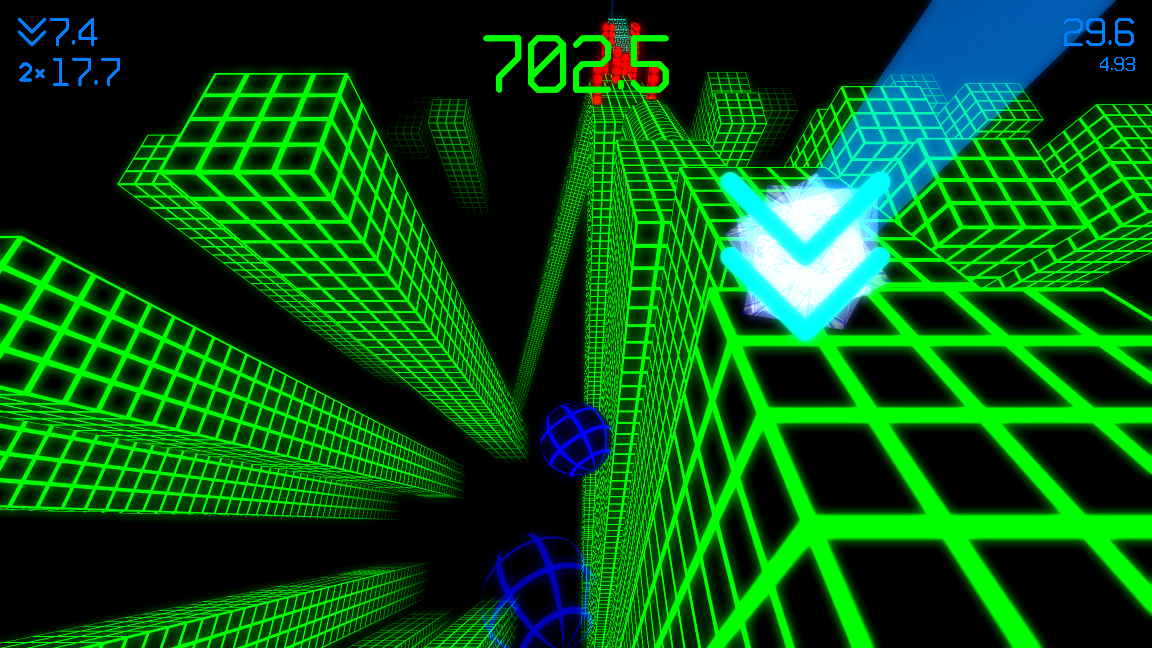Introduction: The Appeal of Speed-Based Games
Fast-paced online games offer a special kind of thrill that more complex games sometimes miss. They don't demand hours of your time to learn complicated controls or storylines, yet they can be incredibly engaging. These games typically feature:
- Simple one or two-button controls
- Gradually increasing difficulty
- "Just one more try" addictive quality
- Quick sessions perfect for short breaks
Slope Game exemplifies this category perfectly. This 3D running game puts you in control of a ball rolling down an endless, geometric track that twists, turns, and challenges your reflexes at every angle. Its minimalist design—featuring a neon ball against dark geometric surfaces—creates an experience that's both visually striking and intensely focused on gameplay rather than graphics.
Gameplay: Understanding the Basics
Getting started with games like Slope Game is straightforward, which is part of their charm. Here's how the typical experience unfolds:
Controls
Most ball-rolling games use arrow keys or WASD for movement. In Slope Game, you'll use the left and right arrow keys (or A and D) to control your ball's horizontal movement as it automatically rolls forward down the slope. This simple control scheme is deceptively challenging, as the speed increases and the track becomes increasingly unpredictable.
Game Mechanics
The core gameplay loop involves:
- Navigation: Guiding your ball down a track while avoiding obstacles and gaps
- Acceleration: Managing increasing speed as you progress further
- Score Building: The further you go, the higher your score
- Obstacle Avoidance: Dodging red barriers and preventing falls off the edge
What makes these games compelling is how they create a flow state—that perfect balance between challenge and skill where you're completely absorbed in the moment. The continual acceleration creates a sense of accomplishment as you master harder sections at faster speeds.
Tips for Mastering Ball-Rolling Games
Whether you're trying Slope Game or similar titles, here are some strategies to improve your performance:
1. Start with Small Movements
Overcorrection is the most common mistake new players make. Instead of making dramatic moves with your controls, try small, precise adjustments. This becomes increasingly important as your speed builds up—a gentle tap might be all you need to avoid an obstacle.
2. Look Ahead, Not Directly at Your Ball
Train yourself to focus slightly ahead of your ball rather than directly at it. This gives you precious extra milliseconds to react to upcoming obstacles. In Slope Game particularly, the track can change direction suddenly, and those who look further ahead have a distinct advantage.
3. Find Your Rhythm
After playing for a while, you'll notice that many of these games have a certain rhythm to their obstacle placement. Try to get into a flow state where your movements become almost musical in their timing. This mindset helps particularly when speeds become dizzying.
4. Use Deaths as Learning Opportunities
Instead of getting frustrated when you fail (and you will fail often), use each attempt as reconnaissance. Where did you make mistakes? What surprised you? Each run provides valuable information for your next attempt.
5. Practice Speed Management
In some sections, it may actually be beneficial to slow down slightly by moving against the slope's direction. Mastering when to embrace full speed and when to exercise caution separates novices from experts.
Taking Your Skills to Other Games
The skills you develop playing games like Slope Game transfer well to other reflex-based games. The hand-eye coordination, predictive movement, and quick decision-making under pressure are valuable across many gaming genres.
Some players find that after mastering these games, they perform better in:
- Racing games
- Platformers
- Rhythm games
- Even first-person shooters, where quick reactions matter
Conclusion: Why These Simple Games Endure
There's something almost meditative about the simplicity of games like Slope Game. In a gaming landscape often dominated by complex open worlds and intricate storylines, these straightforward experiences offer a pure gaming challenge that's refreshingly direct.
The best approach is to embrace the inevitable failures as part of the fun. These games aren't about completing a story or reaching an endpoint—they're about the thrill of the run itself and the satisfaction of beating your previous best score.
Next time you need a quick gaming break or want to test your reflexes, consider giving Slope Game or similar titles a try. Their accessibility combined with their depth of challenge creates an experience that can be enjoyed in short bursts or longer sessions alike. And remember—sometimes the simplest games can be the most difficult to master.
